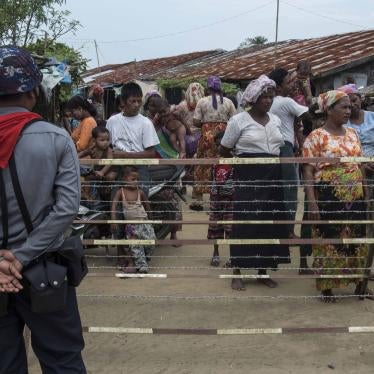When I last visited the Rohingya refugee camps in Bangladesh at the end of last year, a new sort of everyday life was taking shape. No longer were countless desperate people milling about by the road, on paddy fields, and in public buildings. Instead, I watched refugees line up for plastic, tarpaulin, and bamboo to help construct rows upon rows of shelters.
But these rickety structures won’t be able to withstand the storms and heavy rains of the imminent monsoon season. And as dry earth turns to sludge in the coming weeks and months, there will be danger of both mudslides and disease.
A short but severe storm on Monday portends future disaster. Anxious activists began to call us in the afternoon. One sent a video recorded by 18-year-old Shafiq on his cell phone. The storm ripped into about 900 dwellings, some of which essentially fell apart and blew away.
The head of the International Committee of the Red Cross in Myanmar posted a video on Twitter from Maungdaw town, just across the border from the camps, expressing his concerns: “A reminder about the potential impact of the upcoming monsoon.” The United Nations refugee agency said it was accelerating its delivery of sturdier shelter kits, but the challenge is daunting.
Various UN agencies and humanitarian organizations on the ground in Bangladesh are seeking to address the situation. Their concerted efforts will hopefully get the refugees through this monsoon, but the difficulties they face, including the desire of many to return home to Myanmar when it’s safe to do so, will remain.
Resolving that issue will require concerted international pressure, including by the UN Security Council, so that Myanmar puts in place the necessary economic, political, and security measures so that the approximately one million Rohingya refugees in Bangladesh and those that remain in Myanmar will be able to one day soon resume their lives in safety and dignity.










